Hello, and welcome to episode 27. Following on from episodes 25 and 26, I’m going to show you some more images from a trip to Hokkaido from the 17th to the 20th of February 2006. This is the third of a what I now know will eventually be a four part photo-journal of a trip. Today I’m going to talk about a two hour trip out on the Sea of Okhotsk from the Rausu port, in which I shot a beautiful sunrise and hordes of Steller’s Sea Eagles and White-Tailed eagles. We also have a bit of housekeeping to do today, so please listen out for that at the end of the Podcast.
OK, so another early start on the third day of the trip, leaving the hotel at 5AM for the port at Rausu. Rausu is a fishing village on the Shiretoko Peninsula, that you can see sticking out to the East of the island of Hokkaido. While we were waiting to find out if the boat would go out, I couldn’t resist jumping off the bus and walking down to the waters edge to capture the first image I’d like to take a look at today, which is number 895. Remember you can view this first image on your iPod, but to view the rest, you’ll need to use iTunes and click through the images with the little arrows above the thumbnails, then clicking on the thumbnail itself to open them. Or you can go to my Web site at martinbaileyphotography.com and enter the numbers I give you into the field under the Podcast section on the top page or on the Podcast page itself. If you’re at a computer though probably the best way to view the images is to find this episode in the table on the Podcasts page. Here you’ll find all the links and thumbnails to images which you can view in my gallery by clicking them. Note that I’ve changed the Podcast page this week so that it opens the images in the same window instead of a new one, so that you can just use your browser’s back button to return to the list.
Anyway, getting back to image number 895 of the fishing boat in the Rausu port; here we see a number of boats moored in the port with the lights shining brightly as they prepare to put out to sea. This was shot at 120mm with my 100-400mm F4.5-5.6L lens at 5:23AM. I selected an ISO of 800 as you can see, it’s totally dark still at this time of the morning. To ensure that the scene was not registered as bright as day, as my camera would have liked, I exposed this with minus 1 and 2/3 of a stop, which also stopped the lights on the boats from blowing out. This gave me a shutter speed of just 1/80th of a second at F5. I could get away with F5 as the main subjects were quite a way off, but I was pushing it with this shutter speed. I shot about 4 or 5 frames here though, and I think only two of them were just a little soft. This one was incredibly sharp, so this is a tribute to the 100-400mm lenses Image Stabilizer. Either that or I was frozen solid and acting as a human tripod. It probably goes without saying, but I really like the play of the lights on the partially frozen surface of the sea in this image.
The next shot, number 899 which I captured around 45 minutes later as we set out a little way to sea, has the mountains behind the village making a backdrop for the scene of the fishing boats on there way out to sea too. It not easy to see the boats well in the small Web version, but I think you can still appreciate the mountains. I was still exposure compensating to the tune of minus one stop, as it was not yet bright enough for my camera to handle the situation properly. This gave me a shutter speed of 1/200 of a second at F5.6. I was at ISO 1600 now too, as I was now standing on a boat rocking around on the sea, and needed a fast shutter speed to stop camera shake.
One other thing you’ll notice here is that there is no drift ice on the sea here. Apparently there’d been ice two days earlier, but it had drift out to sea. One plan that was considered was to sail right out to sea to find some drift ice, but none of the boats in the area reported seeing any, so we decided to go out a little further shoot the imminent sunrise. This would also give us plenty of time to go back into the port where there was lots of drift ice and shoot the Steller’s Sea Eagles and White-Tailed Eagles.
So let’s take a look at that imminent sunrise in shot number 901. At 400mm I needed a faster shutter speed, and although I’d now dropped the ISO to 400 while looking directly at the sun low in the sky, the shutter speed was 1/500 of a second at F5.6. You’ll notice a fair amount of grain in this shot for 400mm, and to be honest I’m not really sure why this is, probably because of the lighting conditions. I thought for a short while we were going to see one of those wine glass shaped sunrises as the sun’s aura started to extend up above it as though reaching for the low cloud, but it wasn’t to be. This is about as misshaped the sun got. I still kind of like this though, and the gull flying to the right of the sun’s disk adds a little interest in a print of this.
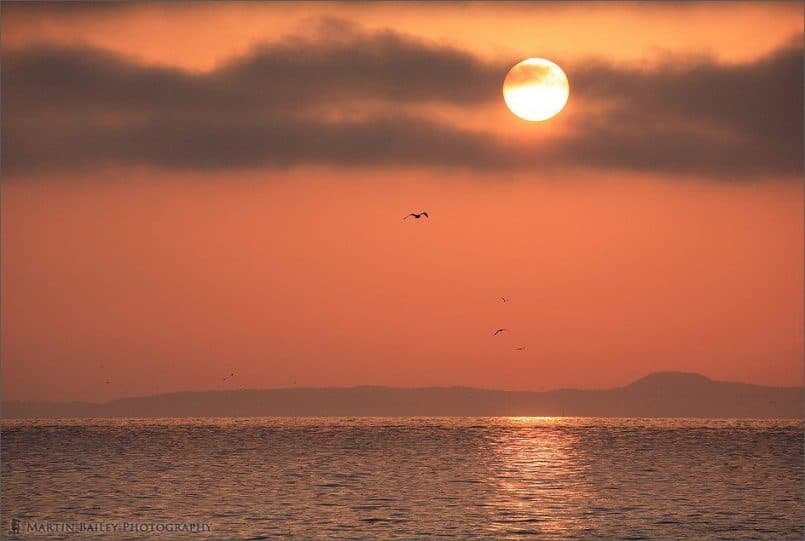 13 minutes after the last shot, which was captured at 6:19AM by the way, the sun had rose considerably in the sky, and I once again put the gull’s silhouettes to use in shot number 904. Still at ISO 400 the grain is now greatly reduced, though the shutter speed was now 1/1000 of a second at F8. I exposure compensated this at minus 2/3 of a stop to ensure the sun’s disk didn’t blow out. I was basically keeping my eye on the histogram as I shot, looking for the clipping warning, or the little white areas that flash black when they are close to or completely over exposed. This allowed me to make the clouds partially enshrouding the sun to come out nice and dramatically dark, and keeps the colours in the shot saturated. There are a number of other shots of this sunrise on my site too, so if you’re interested, click around on the filmstrip under the photos to see the others.
13 minutes after the last shot, which was captured at 6:19AM by the way, the sun had rose considerably in the sky, and I once again put the gull’s silhouettes to use in shot number 904. Still at ISO 400 the grain is now greatly reduced, though the shutter speed was now 1/1000 of a second at F8. I exposure compensated this at minus 2/3 of a stop to ensure the sun’s disk didn’t blow out. I was basically keeping my eye on the histogram as I shot, looking for the clipping warning, or the little white areas that flash black when they are close to or completely over exposed. This allowed me to make the clouds partially enshrouding the sun to come out nice and dramatically dark, and keeps the colours in the shot saturated. There are a number of other shots of this sunrise on my site too, so if you’re interested, click around on the filmstrip under the photos to see the others.
After the sunrise we headed back into the port to shoot the eagles I mentioned earlier. Again there are loads of shots from this location on my web site, so I urge you to click around if you have time. The first one I want to talk about today is more of a documentary shot that I want to use to explain how we get the chance to shoot so many eagles here in Rausu.
Take a look at shot number 914, in which you’ll see three Steller’s Sea Eagles standing on the drift ice eating fish scraps. The boat is basically chartered by photographers for the sole purpose of photographing the sunrise and the eagles, and they take a number of plastic trays full of fish and squid scraps out with us, and throw it out onto the ice. This attracts literally hundreds of eagles and gulls that gorge on the free feast.
I recall actually that when I came here in February 2004 I was standing near the front of the boat from where the captain was throwing fish from a plastic tray out onto the ice. It wasn’t until I got back into the bus that I realized that as he’d swung the fish backwards to gain momentum before throwing it, he’d been splashing oily fish juices onto my nice new Gore-tex down jacket and it stunk. I franticly wiped it off with some tissues but I remember getting a whiff of it every so often over the remaining days of the tour.
Anyway, now that we have lots of eagles in the area, there are many like the three in the last shot, standing on the ice eating their scraps. In fact, did you know that eagles cannot eat in flight? Hawks can eat on the wing but eagles have to land and eat like these guys are here, with the prey held in place with their talons. So, the first few eagle shots from the boat that I uploaded were captured with the 100-400mm, and thinking that I’d probably gotten a few decent shots, I decided to try my luck with the 600mm F4 lens, after all, I’d had it hanging from my shoulder since leaving the port and it was starting to feel really heavy. There’s no way you can hand-hold this lens, so I’d brought a monopod with me onto the boat. I mounted the lens onto the monopod and started shooting. This first shot was made with the 600mm lens, at F5.6 for 1/200th of a second, with ISO 400. I was getting many more soft or just totally blurred images shooting with the 600mm at slower speeds than would be advisable for this focal length, and I’ve not really used my monopod with this lens until now either, but I got enough really sharp images to have made switching worth while.
So in addition to shots of eagles on the ice, there are also lots of aerial shots to be captured too. Let’s take a look at shot number 907, which was actually made with the 100-400mm lens. I’m talking about these two shots in reverse order because I wanted to show you the eagles eating from the ice, before I showed you this one, which shows two juvenile Steller’s Sea Eagles fighting it out over fish head and in fact dropping it, meaning that neither ate it. It’s quite common to see these birds battling it out in mid-air over their meal, but I was pleased to actually capture them dropping their scraps here, and also with the red sky of the sunrise in the background adding to the drama. This was shot at F5.6 for 1/800 of a second at ISO 400.
Now it’s back to the 600mm F4 lens for shot number 919, which is a bit of a fluke shot. I had the White-Tailed Eagle on the right in the frame and saw it was about to take flight and so started to shoot, and as I did, a juvenile Steller’s Sea Eagle came in and took the White-Tails place on the ice. I didn’t get the entire bird in the shot, but it shows them changing places well I think, and adds to the feeling of movement as the second bird enters the frame. I was again using a shutter speed of 1/800 of a second here at F5.6, but now at ISO 800 as it had once again started snowing, and the light was pretty low.
I find this next shot a little comical. Take a look at shot number 922, which I’ve titled Sent to Coventry. It looks as though the three Steller’s Sea Eagles on the large chunk of drift ice in back are talking about the lone eagle in the foreground, as if he’s been sent to Coventry, or driven out of the group. I shot this again with ISO 800 at 1/800 of a second but now at F8. I was trying to get enough depth of field to be able to make out the guys in the back there talking about this proud eagle in the foreground.
There’s one last thing that I want to tell you before we move on from all these eagle shots. The captain of boat from which we were shooting stops it’s engines every so often to allow you to shoot without the vibration that the engines cause. However, these times are not long and only few. This is not such a big problem when shooting hand held, and probably less of a problem than trying to keep your horizons straight from a rocking boat deck. However, as I mentioned earlier, I was using a monopod all the time while shooting with my 600mm lens. The monopod would of course transfer all of the vibration of the boats engine to the lens and pretty much without down ruin all of your shots, not to mention possibly even shaking some screws loose inside the lens. So what I did was to rest the monopod’s foot on my right boot. My big warm boots have a large rubber toe area, and made an excellent damper to protect my lens and my shots from the vibration. This does as an extra thing to worry about, as I had to change my footing every so often as the boat rocked. This was not so stressful though, and helped me to get some great sharp shots, so I’d recommend this method of shooting to anyone in a similar situation. Oh yes, I said just one last thing before moving on, but just though of one more. Make sure you keep the strap of your lens or your camera around your neck at all times while on a boat like this. It would be a crying shame if you were to loose your balance and in turn your equipment into the icy waters below.
So having shown you eagle shots last week as well, I think we’re just about all eagled out, so let’s talk about something else before wrapping up for today. Take a look at shot number 923, in which we can see a whole load of ice pillars or stalagmites with a few stalactites hanging down too. This shot is of the interior of a cave that in the summer is home to the Hikarigoke, or Luminous Moss. I’ve never seen the Luminous Moss in the summer, but it’s supposed to shine in lots of different colours. It dies off in the winter, and these ice pillars take it’s place. For this somewhat abstract shot I’d closed down my aperture to F9 to get a little bit more depth of field with my 100-400mm lens. The exposure was for 1/2 a second, so you can probably appreciate that it was pretty dim in the cave. It would detract from the strange beauty of these ice pillars to shoot them so dimly though, so I gave the image plenty of light to do them justice.
After this we drove for a few hours through the afternoon arriving in the town of Utoro at around 2:30PM. As we drove into town there were lots of deer at the side of the road, which we shot from the bus windows a number of times, and then as we continued to drive along the coast we spotted the guys in shot number 925, diving in the gaps between the drift ice in the sea. I’d never seen this before, but we saw a number of groups as we drove further along the coast. I chose this shot to upload as they gave us some big smiles and waved when they saw a bunch of camera lenses sticking out of our bus windows. Actually when you look at this photo at 100% some of these guys faces look pretty cold as they seemingly force a smile, but most are simply smiling naturally, which I found amazing while diving in a frozen sea.
After this we headed for the Shiretoko Nature Center and I got some great shots of the Hokkaido or Ezo deer, but as we’re already at 10 shots for today I’m going to leave talking about that until next week, which will be the final part of this photo-journal. Let’ take a look at one last shot that I made after visiting the nature center, which is shot number 933. This is looking down on the Utoro Bay from the Puyuni Promontory. We’d come here hoping to get a nice sunset over the sea, but it wasn’t to be. As the rest of the group started heading back for the bus though, there was just a little colour in the sky, and I chose to use this to set off the unfrozen part of the sea in this shot, against the drift ice that was packed up against the shore here in Utoro. Utoro is by the way on the other side of the Shiretoko peninsular and as we saw in the earlier shot of the guys diving, Utoro did have a fair amount of drift ice. Not as spectacular as most years, but still made for some different images at least. So with the sun going down let’s call it a day, but remember I have some housekeeping after this, so please stay tuned.
Beep/Click
First of all, it’s a new month, so please drop by Podcast Alley to vote for this Podcast if you like it. This will help to keep the show in the public eye and obviously the more interest we can generate, the more time I’ll invest in creating it. There’s also a place that you can submit your vote from on my Podcast page.
The winner of the Martin Bailey Active Member Prize for February was Keith Guthrie from London, UK. Keith has already chosen his print, which is number 528 if you want to take a look. I’ve also posted a link in the Announcements forum for you to take a look. Although we’re probably going to stop the active member prize soon in favour of a photography assignment, probably at least for March, all you have to do to be in with a chance of winning an original print of any of my images is post in the forum at least once during this month. That’s all!
Next up; and I’ll be talking about this for the next couple months, I’ve started a survey of listeners, and it would be excellent if you could take five to ten minutes to complete the online survey. It will help me learn more about you and hopefully lead to me finding a sponsor for this Podcast. It doesn’t matter how long you’ve been a listener or how frequently you listen to this Podcast. There is a small link on the top page and a larger link on the Podcasts page at my Web site at martinbaileyphotography.com. It’s totally anonymous and really does only take 5 to 10 minutes, so thanks in advance!
Also, I’ve updated the Podcasts page to give you a number of different ways to display the episodes. From now on, by default, only the last 12 episodes will be when you first access the page. If you want to view the entire archive, click on the link in the index or under each episode in the table that says “Display text index of all Podcasts to date and latest episode”. As the link says, this will display all Podcasts to date, and the very latest episode. There’s another link to “Display all episodes in index and one big table”. This is pretty much as the page has been to date. One other new change is that now, when you select an episode from the index, it will jump directly to that episode and not display any other episodes in the table. The index though remains, and you still have the links to change how to display the index and tables or return to the default view of the 12 latest episodes. Finally, there’s a URL box at the bottom of the details for each episode to allow you to copy a link that will display that episode with a full index to your clipboard. This is so that you can easily mail all your friends to tell them about this Podcast. Nudge, nudge…
So that really is it for this week. I hope you have a great week.
Show Notes
The Music in the first 28 Podcasts is copyright of William Cushman © 2005, used with kind permission.
Subscribe in iTunes for Enhanced Podcasts delivered automatically to your computer.
Download this Podcast in MP3 format (Audio Only).


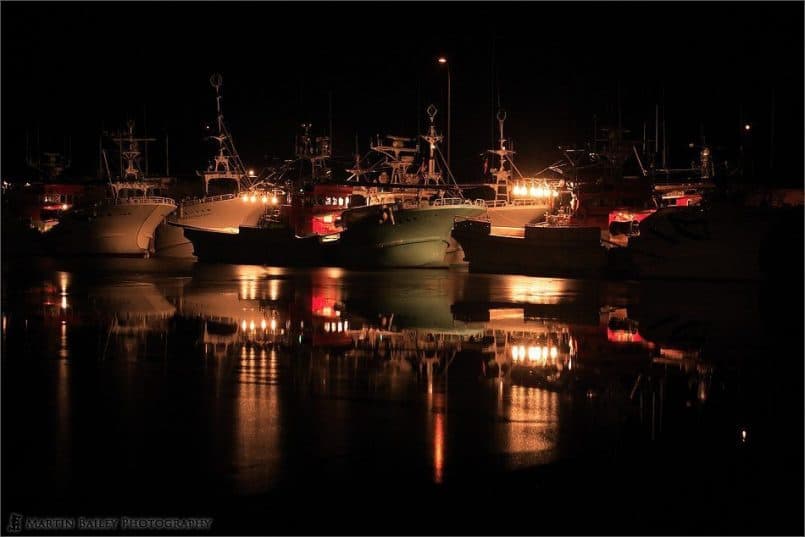
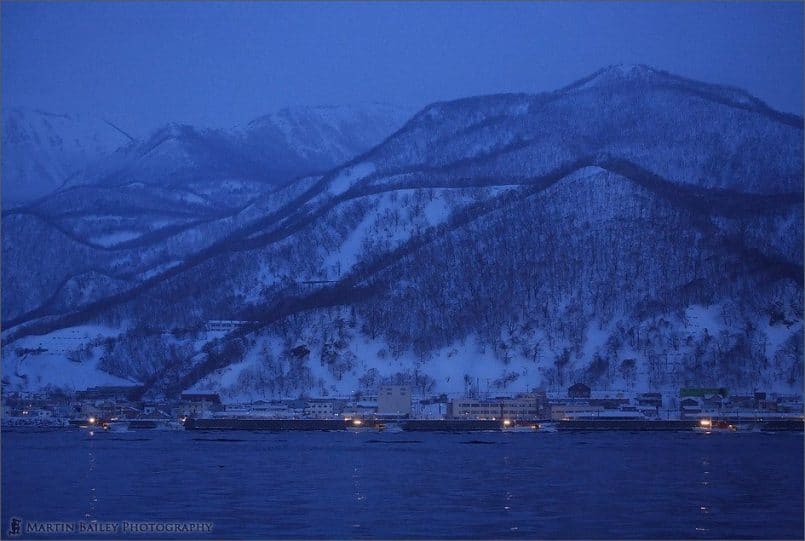
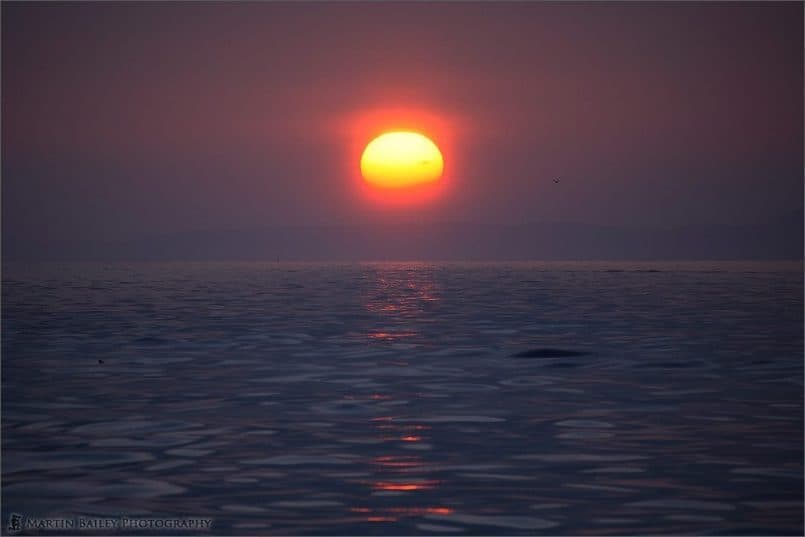
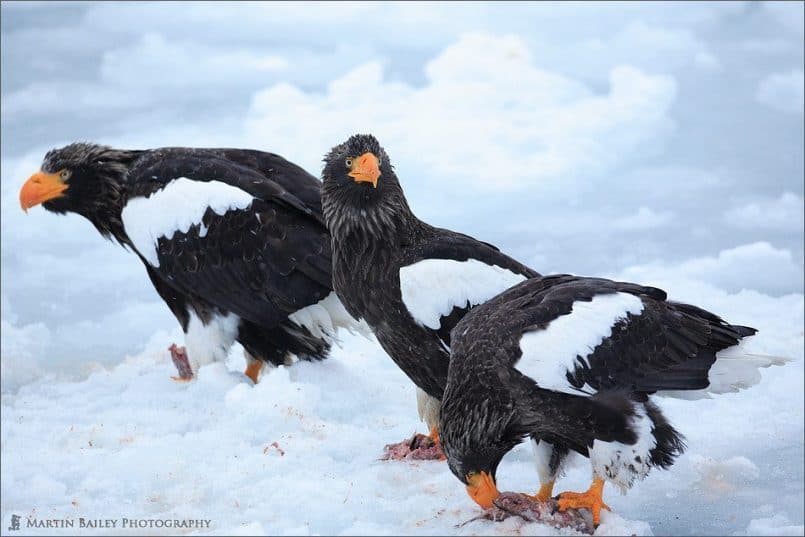
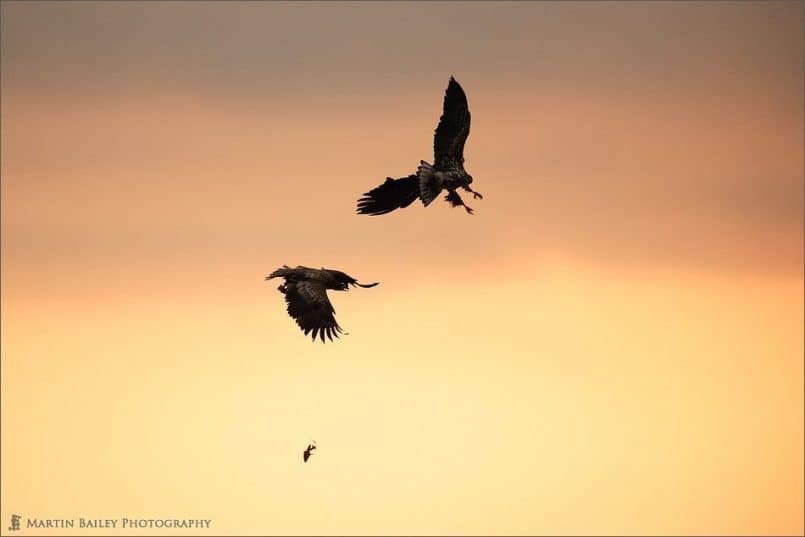
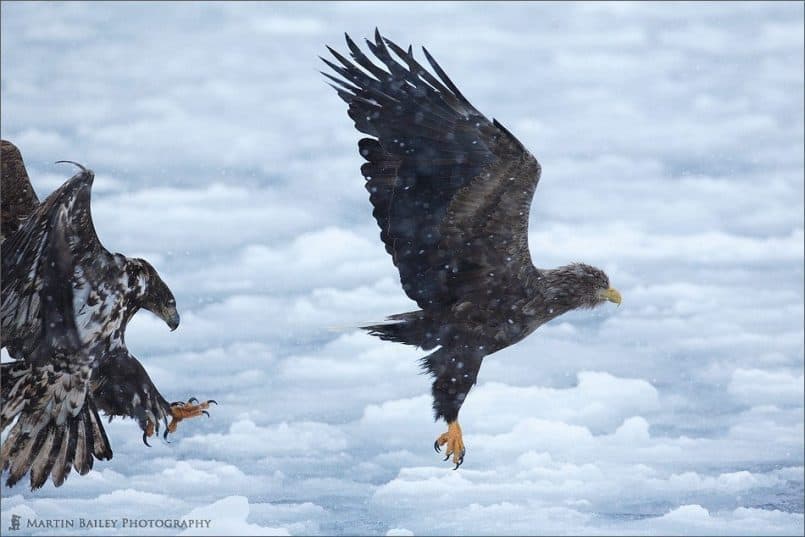


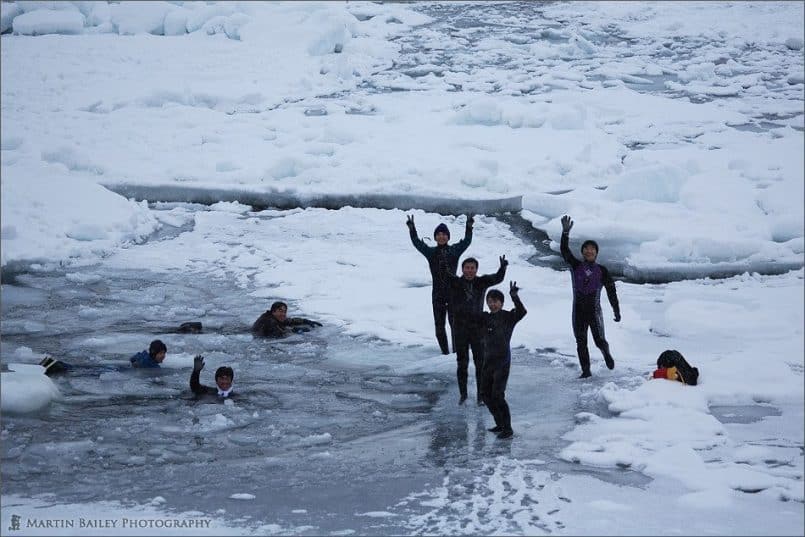
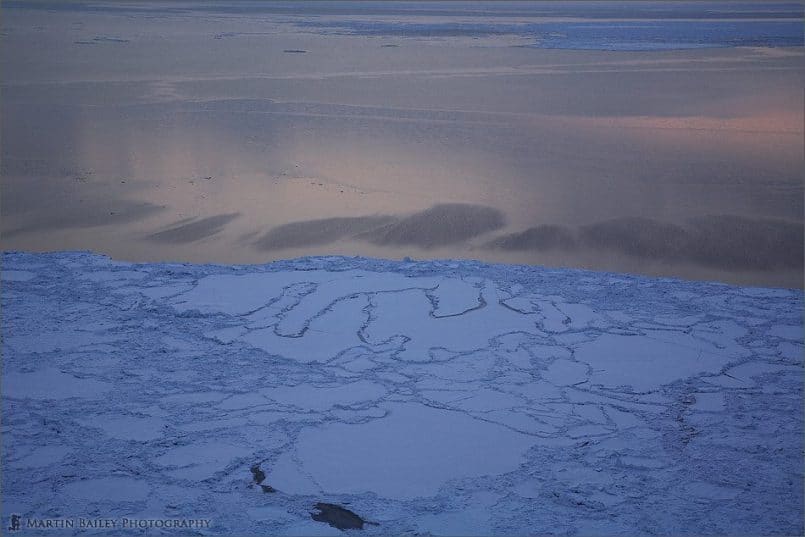

0 Comments